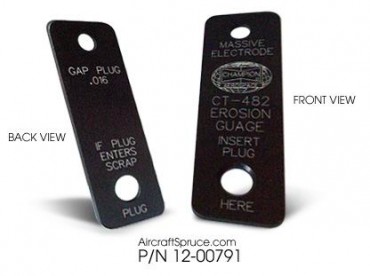7 out of 12 Tempest massive spark plugs had to be replaced after 500 hours on my IO-540 during my annual, because they were out of spec. See picture of one out of spec plug.
What is the usual lifetime of a Tempest massive spark plug? I was under the believe that they last more than 1000 hours, and was surprised that 7 out of 12 had to be replaced.
Thank you.
What is the usual lifetime of a Tempest massive spark plug? I was under the believe that they last more than 1000 hours, and was surprised that 7 out of 12 had to be replaced.
Thank you.






